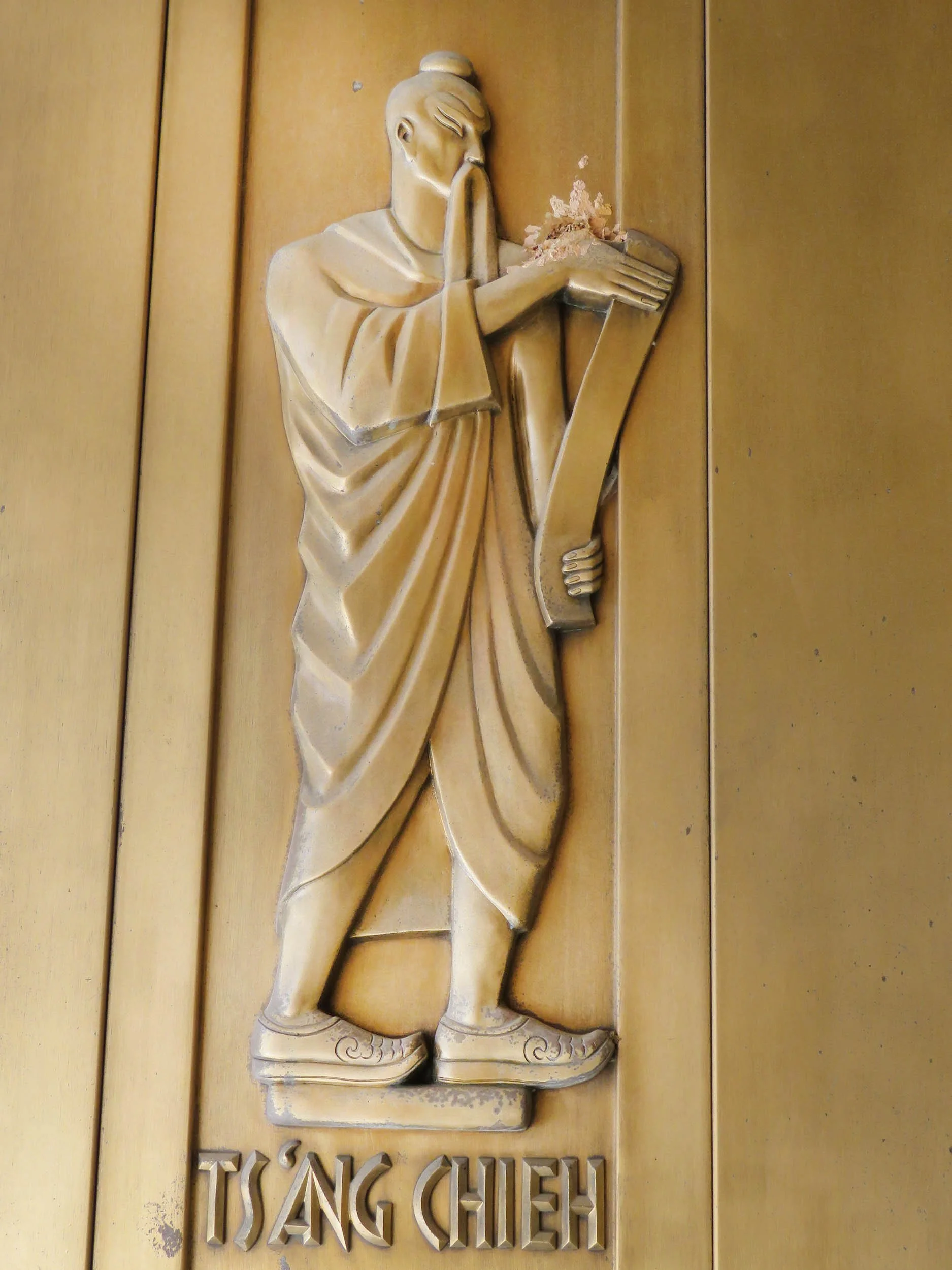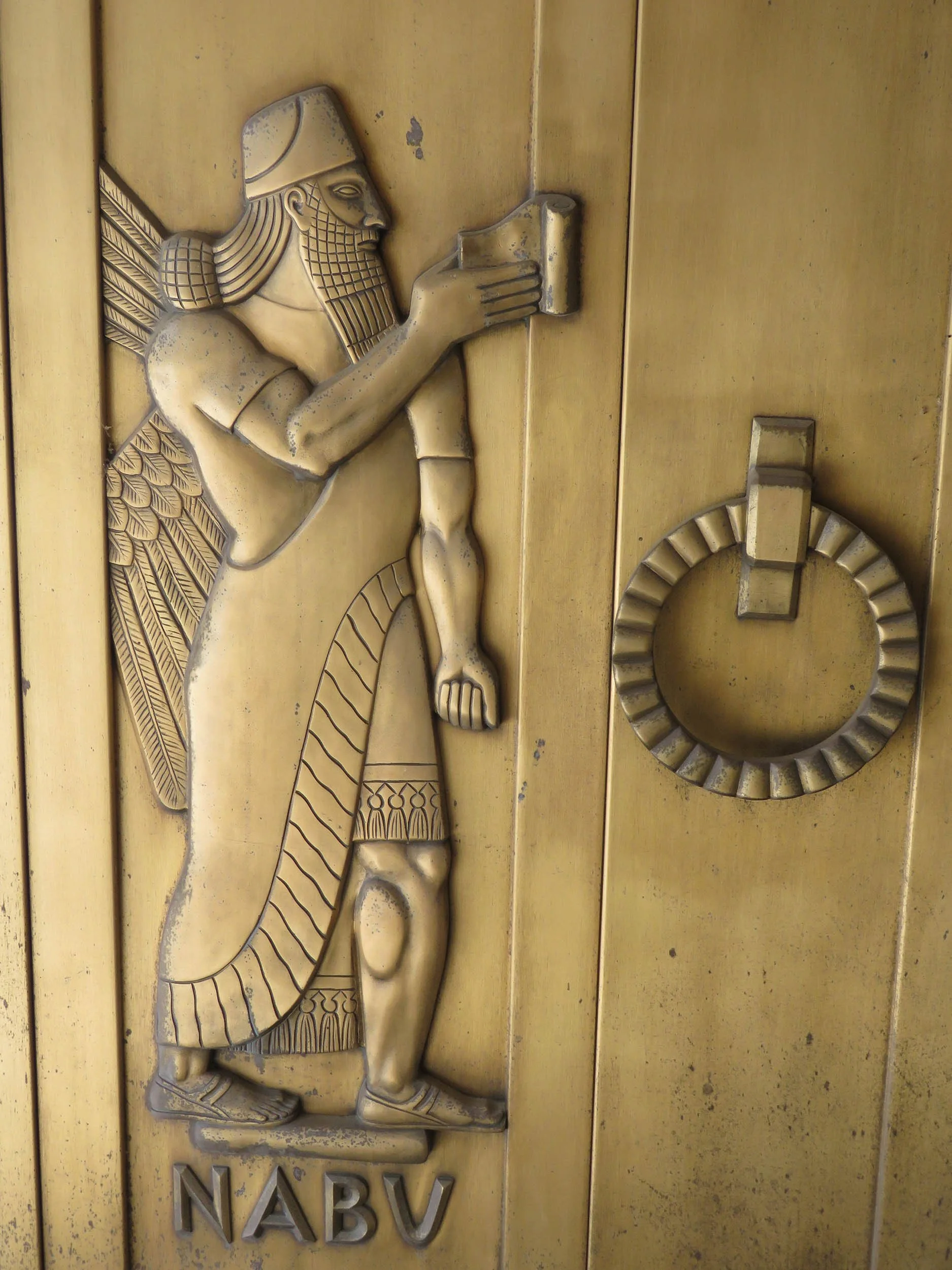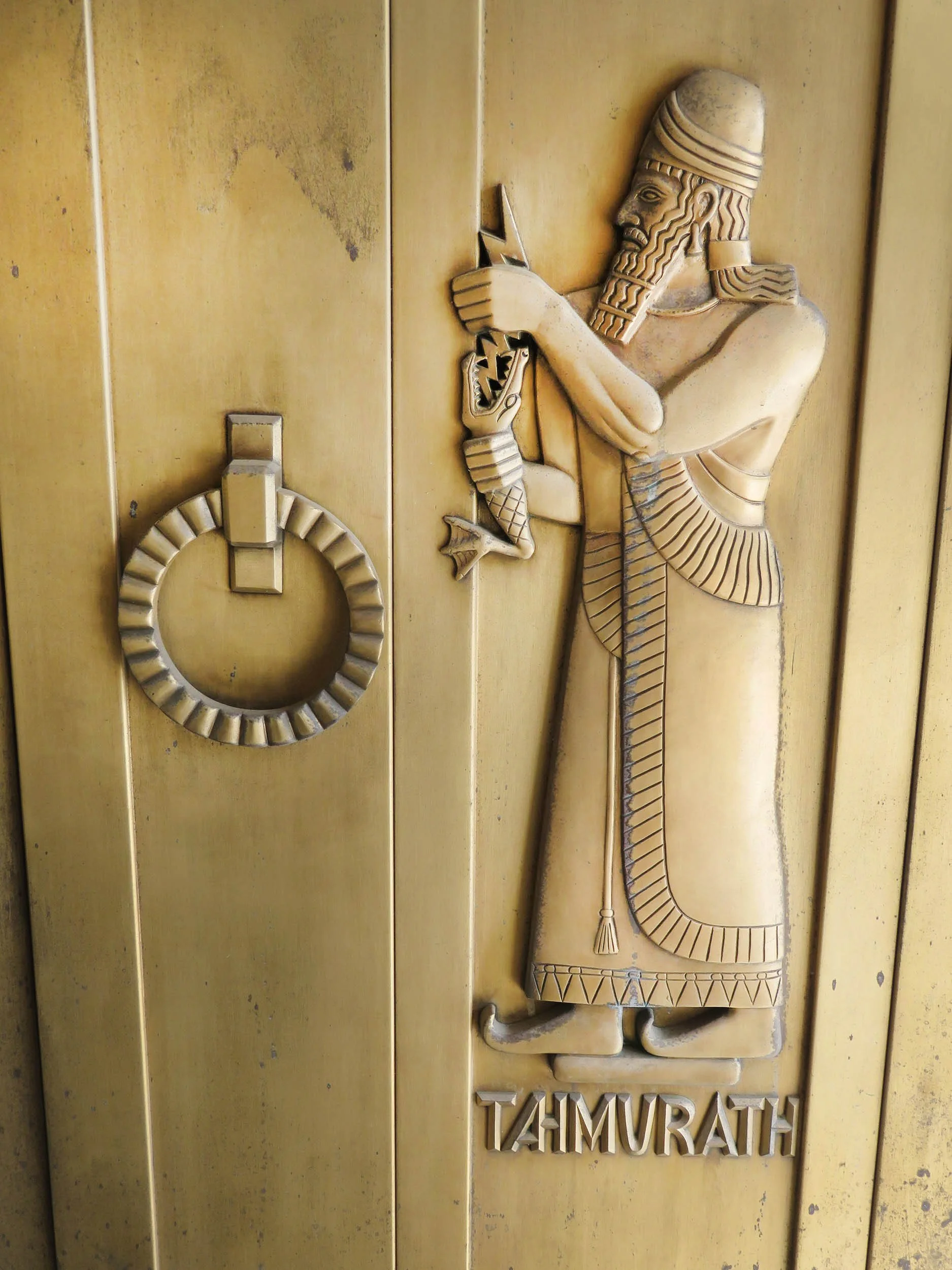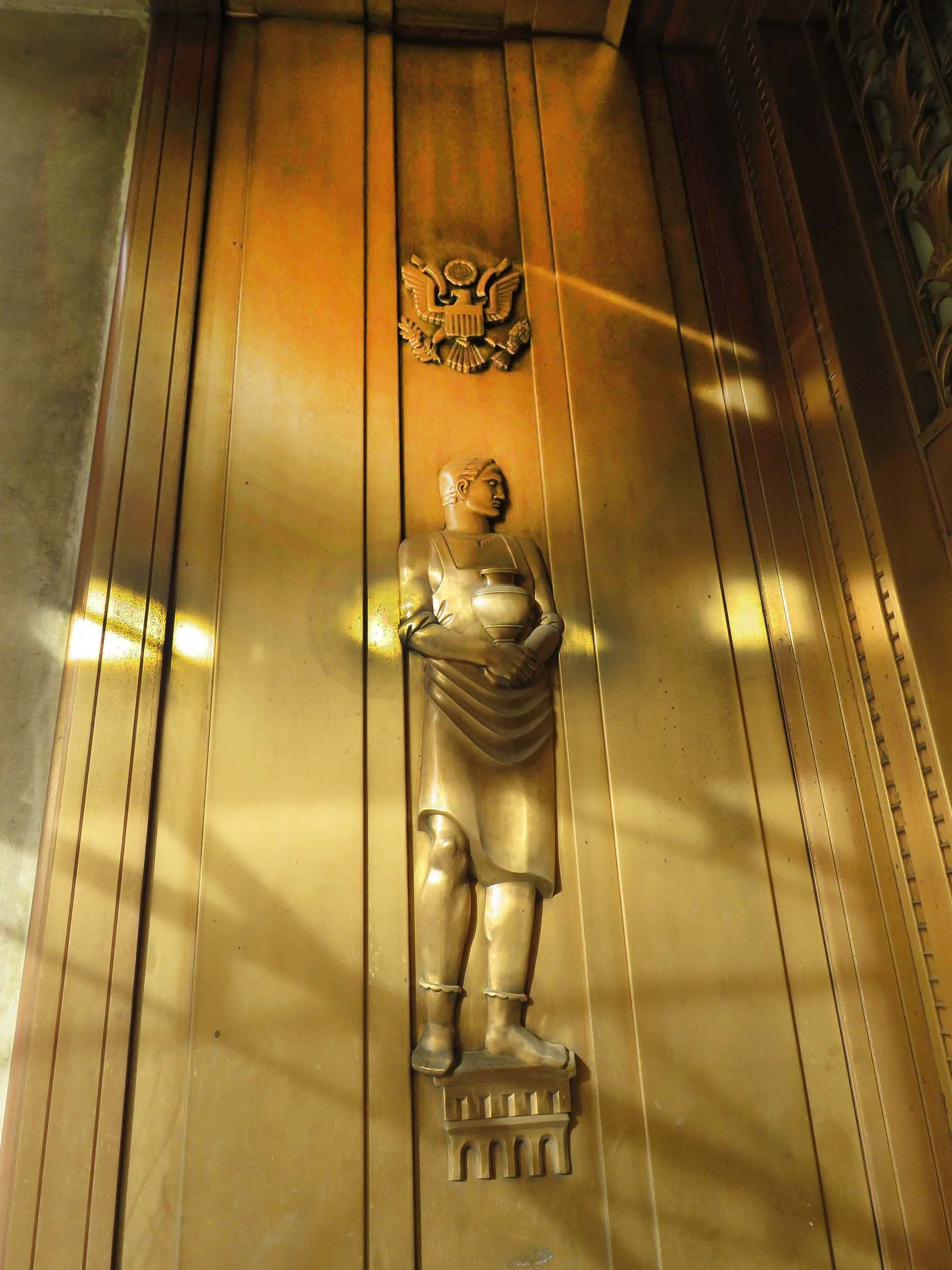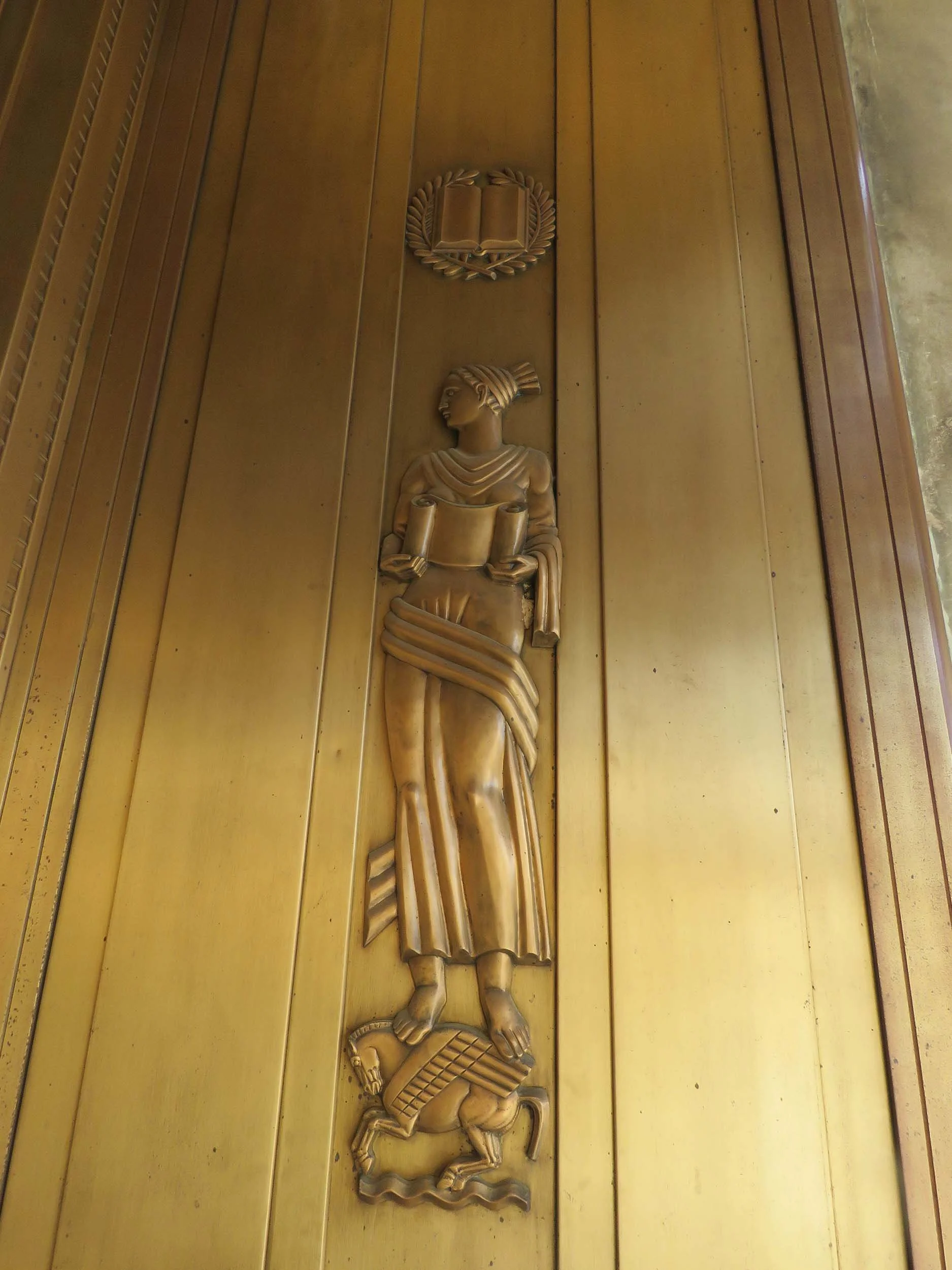The Legends of Literature.
LEGENDS TRACED ON BRONZE DOORS ON BRONZE DOORS:
Library of Congress Annex Portals Depict Story of Written Word.
BY JAMES WALDO FAWCETT
Seven pairs of bronze doors have been added to the Library of Congress Annex. They fill an equal number of entrances to the new building, each approximately 10 feet high by 6 feet wide. Three on the west and three on the east side of the main white marble structure pay homage to the legendary inventors of the several alphabets employed in the art of writing, and one on the south end allocated to the copyright office is ornamented with the seal of the United States. The seal of the Library, a human figure, symbolizing, physical labor, and a similar figure, typifying, intellectual labor – the former man, the latter, a woman.
Executed by the flower city ornamental iron Cove of Minneapolis, the doors were designed by Lee Laure,(sic Lawrie) New York sculptor, under the direction of David, Lynn, architect of the Capital. Pearson and Wilson, consulting architects and excel Alexander B Trowbridge consultant. The themes for the alphabet sequence were suggested by Dr. William Adams Slade, chief reference librarian, and approved by Dr. Herbert Putnam, the library of Congress.
On both the east and East front and the west two doors are identical, each showing six figures as follows:
THOTH: Thoth, depicted with the head of an ibis, was the representative of divine wisdom, and the Amman and Axel of all gods in the theology of ancient Egypt. According to tradition in the Nile valley, he conferred upon mankind political economy, as well as speech, and the graphic arts.
TS'ANG CHIEH:T’sang Chieh, according to legend possessor of four eyes, is declared to have conceived the idea of a written language for the people of China from the markings of birds claws upon the sands of the seashore with Chu Sung he is still worshiped as a patron saint of pictographic letters.
NABU: the sum more Sumerl-Accadian God of the stylus, was perhaps the founder of the first institutional library, he is credited by, Ashurbanapal of Syria, having with having advised him to collect the written records of his country. Two of his statues from Nimrud are in the British Museum in London.
BRAHMA:Brahma, the supreme God of the East Indian trinity, gave knowledge to of letters to the human race, and inscribe the text of the Veda on leaves of gold. His handwriting it is suggested may be seen in the serrated sutures of men’s skulls, if not elsewhere.
CADMUSCadmus, with the Phoenicians brought to Greece “a great variety of arts, among the rest that of writings.” His characters, Herodotus affirmed, were to be reviewed in the temple of Apollo in Boetinan Thebes, most of them shaped like the Ionian.”
TAMURATH: culture hero of Arian antiquity, is reported in the Persian epic “Shahnama,” as having conquered demons and forced them to teach him some 30 scripts ***and thus delineate sounds.”
HERMES:Hermes, messenger of the Olympian deities of the Greeks, “invented astronomy, music, the art of fighting, gymnastics, the cultivation of the olive tree, measures, weights, and many other things,” including the alphabet and numbers. His Roman name was mercury, and he appears with wings on his feet .
ODIN: "Discoverer of Runes" embodied in the Havamal of the “Poetic Edda,” is the Norse originator of the science of written communication. He “looked downward” from the “wind-stirred tree,” and seeing the symbols, “fell to the ground.”
OGMA: Ogma, one of the Tuatha De Danann, was the Irish inventor of letters, designer of the alphabet, which still carries his name he is called the god of “the shining countenance” in the mythology of the prehistoric Eire.
ITZAMNA: Itzamna, chief of the Mahon pantheon is referred to as “Lakin chan, or “the serpent of the east” and the creator of men, animals, and plants, as well as the inventor of writing and books. His country was Yucatán, where he “divided the land among the people.”
QUETZALCOATL: Quetzalcoatl, “ most famous and picturesque of the New World Mythic figures, was the source of the Aztec Culture. Some writers think he really lived in ancient Mexico, perhaps “the most remarkable” personality in the annals of primitive America.
SEQUOYAH:Sequoyah, “ sometimes called the ablest intelligence produced among the American Indians,” devised the Cherokee syllabary. He was born in Tennesee about 1770 and his celebrity is perpetuated in the name of the genus of the California giant redwoods and by an effigy in Statuary Hall in the Capitol.
Man, representing physical Labor
Woman representing Intellectual Labor.



